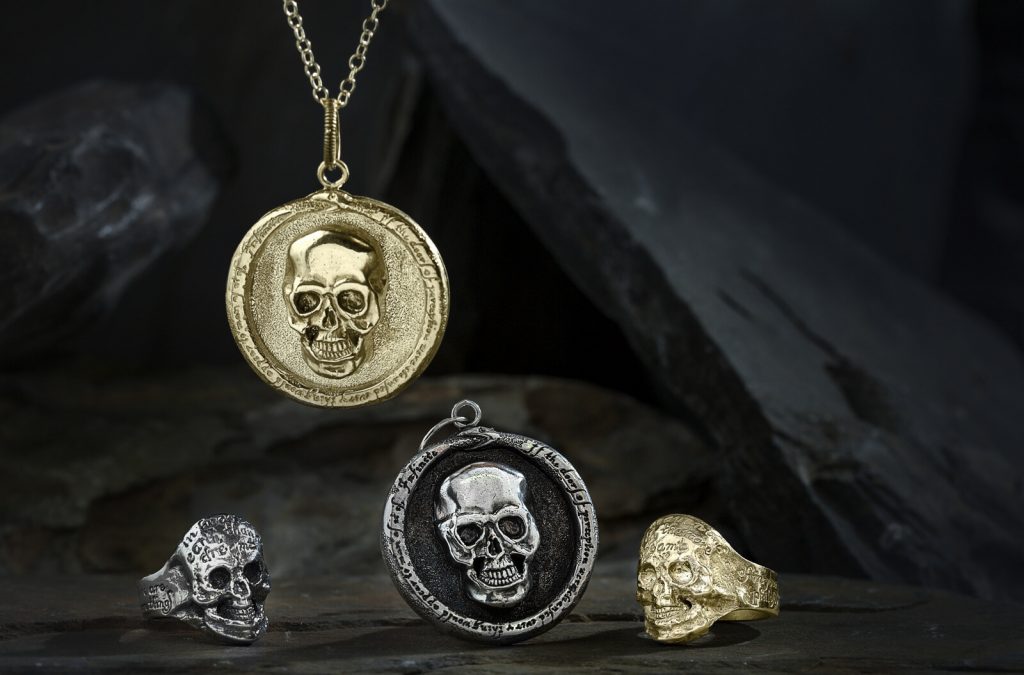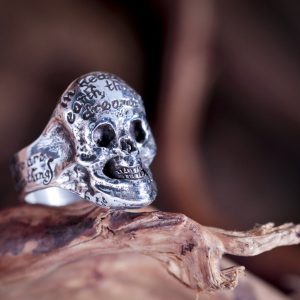Our Fascination with the mystery of death, makes it impossible to remain indifferent to the sight of a human skull.Although dead, the easily recognizable human features offer a straightforward reminder for our own mortality.
The mysterious image of the human skull is deeply etched in the human mind of people and cultures from around the world. As such, it is a symbol of consciousness, life and death, time, piracy, adventure, rebellion and freedom, mystery, alchemy and immortality.
Our Fascination with the mystery of death, makes it impossible to remain indifferent to the sight of a human skull.
Although dead, the easily recognizable human features offer a straightforward reminder for our own mortality.
The mysterious image of the human skull is deeply etched in the human mind of people and cultures from around the world. As such, it is a symbol of consciousness, life and death, time, piracy, adventure, rebellion and freedom, mystery, alchemy and immortality.
A symbol of our own awareness to the elusive concept of time and mortality, at the same time the skull is a symbol of the quest for life.
In alchemical transcripts, the skull serves as a symbol of worthless remains in the quest for immortality. It embody the human spirit, trying to break the boundaries of it’s own consciousness and mortality.
The most famous skull symbolism in history can be found in Shakespeare’s play “Hamlet”, in the scene where Hamlet finds the skull of Yorick, his old friend.
Hamlet’s referred to the skull as a symbol of despair, mortality and inevitable demise. However, at the same time it was a symbol of immortality; of life beyond death, and the mystery of the endless realms of reality and secrets beyond our human perception.
As it is echoed in Hamlet’s words to his friend “There are more things in heaven and earth, Horatio, than are dreamt of in your philosophy”.
It was during Shakespeare’s time, under the reign of the redhead queen Elizabeth that the skull ring first appeared.
Usually without its lower jawbone, the skull ring marked the prodigals, immoral behavior, bawds and prostitutes.
The symbol became known as a “death head” worn by “rakes” –(short for rakehell-“hellraiser”) men who spent most of their time in drinking, womanizing, usually prodigals spending their inherited money on “wine , women and song…”.
So, in that way the skull ring came to signify the
rebellious spirit, the outsiders and the “black sheep”.
And let’s not forget the skull and bones symbol.
The notorious symbol of piracy. It’s origin can be traced in the order of the knight Templars.
The Templars used the skull and bones symbol to make known they held in their possession the relics of Christian saints.
Since they used the skull and bones emblem on their ships while also conducting piracy acts, it became the famous pirate’s emblem.
When they were accused of heresy, their order was dismantled and they were persecuted in the 14th century, the symbol also became a sign of rebellion.
The pirate death’s-head became associated with ruthlessness and despair. Their usage of death imagery symbolized challenging the natural order of things or simply mayhem and anarchy.
The combination of the skull with an image of a bleeding heart and the winged hourglass on the black pirate emblem, combined three meanings- death, violence and limited time—indicating the dangers of the journey and the seaman’s experience.
For many cultures such as the ancient Mayans the human skull represented life, as can be seen even today in the Mexican Day of the Dead.
The skull can also be found in different cultures as a symbol of triumph over your enemies or as a symbol of power when one has the ability to take life.
The skull and serpent symbol is also a powerful image which incorporates the skull as a symbol of both death and knowledge or human consciousness. The serpent was taken from ancient Greece as a symbol of knowledge and immortality since it sloughs off his skin and is being “born” again. The serpent symbolizes the esoteric knowledge that exists beyond our own mortality.
The skull is a powerful symbol and a powerful reminder with layers upon layers of hidden meanings derived from the cradle of the human race. A symbol of mortality, of time that slips away, encouraging us to “cease the day”, or perhaps a symbol of rebellion, of freedom or the courage facing our own mortality.










